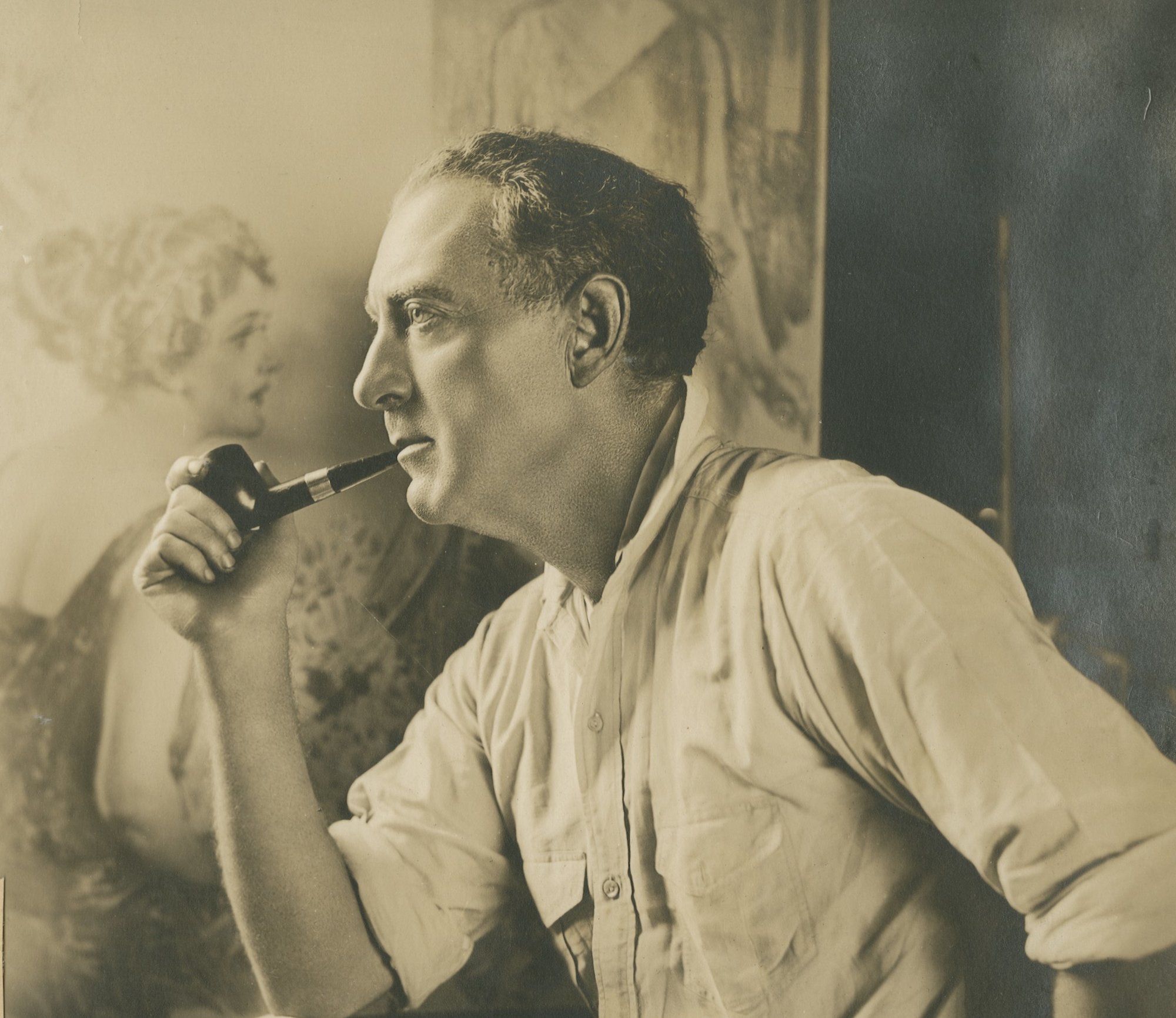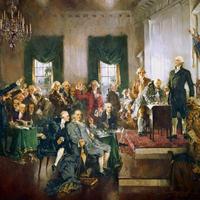More about Howard Chandler Christy
Works by Howard Chandler Christy

Contributor
Howard Chandler Christy was the coolest guy you could know in the first half of the twentieth-century.
Whereas most artists tend to follow a sort of 'rise-and-fall' career path, Christy never stopped being the absolute embodiment of the Great Gatsby (without all of that business with the green light and consequences of materialism). He was a battlefield painter, charismatic lover, socialite, pop-culture icon, and even had the pleasure of painting several U.S. Presidents, Amelia Earhart, and Eddie Rickenbacker.
Beginning his career in 1890 at the age of 17, Christy attended the Art Students League in New York City under the guidance of American impressionist painter William Merritt Chase. While understudying Chase, the young artist was encouraged to utilize the ‘plein air’ technique which impressionist painters were crazy about at the time. However, the end of the 19th and beginning of the 20th century coincided with a technological revolution in print-making techniques. This allowed traditionally text-based periodicals and advertisements to include colorful and easily reproduced illustrations, thus creating a massive demand for illustrators. Sensing this, Christy abandoned traditional uses for his artwork and sought work as an illustrator for publications, advertisements, and books.
His inaugural project was to illustrate a manuscript by author Frank Crowninshield and, following its release, the commissions came rolling in. Then, in 1898, the Battleship Maine sunk in the port of Havana under mysterious circumstances. Due to the U.S.’s cold relationship with Cuba and yellow journalism blaming the sinking on Cuba, the U.S. began the Spanish-American war for which Christy offered his services as a battlefield illustrator.
Christy followed the famous Rough Riders, illustrating scenes of their battles for America’s largest periodicals at the time including Scribner's, Harper's, Century, and Leslie's Weekly and fueling patriotic attitudes at home. It was also here that Christy met and befriended future President of the United States and ultimate progressive badass Theodore Roosevelt. His scenes of battle, portraits of the men who fought in them, and his series of patriotic posters for the U.S. Navy and Army would propel him into artistic fame when he returned home during the latter half of 1898.
Due to his newfound celebrity status, Christy was highly sought after by nearly all publications but chose Scribner's for regular contribution. It was here that Christy would create his famous “Christy’s Girl” who was born from a character within an earlier illustration and based upon a much younger model he later married. This single figure evolved into a central theme in many of his later works; expressing the picturesque and ideal tough and self-respecting American girl for decades. At this point, publishers begged Christy to provide illustrations for their periodicals leading to commission payments of one thousand dollars a week. To put that into perspective, that is the equivalent of half-a-million dollars a year today.
By 1915, it was clear another war was imminent and Christy, once again, offered his services by creating advertisements with a mix of eroticism and patriotism for recruitment, war bonds, and civilian volunteer efforts. Most notably was a advertisement of the “Christy Girl” wearing a Navy uniform with the caption, “If I were a man, I would join the Navy.” By the time the war had ended in the early 1920s, illustration and advertisement had reached a level never seen before in human history, which coincided with the roaring twenties.
Howard Chandler Christy was quickly considered to be the most popular American artist of the 1920s and, during this decade, moved away from illustration and back to portraiture. He painted portraits of six sitting U.S. Presidents, numerous celebrities including Amelia Earhart, pop-culture icons, and famous military commanders. As the United States entered the worst economic depression in its history during the next decade, Christy turned away from popular culture and towards history and academia for the remainder of his life. His most notable work during this period was The Scene at the Signing of the Constitution of the United States, which is among the few paintings that have the honor of hanging in the U.S. Capitol Building. Howard Chandler Christy lived until 1952 when he died peacefully in his studio at the ripe age of 85, presumably with absolutely no regrets.
Featured Content
Here is what Wikipedia says about Howard Chandler Christy
Howard Chandler Christy (January 10, 1872 – March 3, 1952) was an American artist and illustrator. Famous for the "Christy Girl" – a colorful and illustrious successor to the "Gibson Girl" – Christy is also widely known for his iconic WWI military recruitment and Liberty loan posters, along with his 1940 masterpiece titled, Scene at the Signing of the Constitution of the United States, which is installed along the east stairwell of the United States Capitol.
From the 1920s until the early 1950s, Christy was active as a portrait painter whose sitters included presidents, senators, industrialists, movie stars, and socialites. He painted Lt. Col. Theodore Roosevelt, and Presidents Warren G. Harding, Calvin Coolidge, Herbert Hoover, Franklin Delano Roosevelt, and Harry Truman. Other famous people he painted include William Randolph Hearst, Edward VIII, Eddie Rickenbacker, Benito Mussolini, Prince Umberto, and Amelia Earhart. By 1938, Time magazine described Christy as "the most commercially successful U.S. artist."
Check out the full Wikipedia article about Howard Chandler Christy











